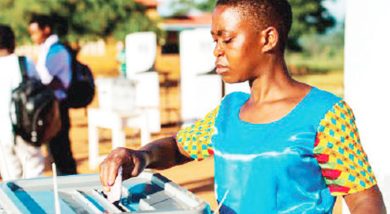Tonse rakes K1.4tn debts
Just one year into office, the Tonse Alliance administration has added K1.4 trillion to Malawi’s public debt, Treasury figures show.
A report by the Ministry of Finance’s Debt and Aid Division shows that between June 2020 and June 2021, Malawi’s total public debt stock surged 34 percent from the K4.1 trillion bequeathed by the Democratic Progressive Party to K5.5 trillion.
Experts have warned that Malawi is now on the precipice of a debt overhang—a debt burden so heavy that the country may not have the capacity to carry more loans.
On average, it means that during the 12 months, government was borrowing a nominal K117 billion monthly to finance the deficit, currently at around K730 billion.
In context, it is a staggering level of borrowing because at K5.5 trillion (comprising domestic and external debt), it represents 59 percent of the country’s gross domestic product (GDP), up from 48 percent at the end of June last year.

The Southern Af r i can Development Community macroeconomic convergence criteria programme—which Malawi now chairs—prescribes 60 percent as a recommended debt- to-GDP threshold, implying that 59 percent is a red flag.
The total debt pile is nearly equal to three national budgets. The 2021/22 eight-month budget, which expires on March 31 next year is worth K1.9 trillion.
Meanwhile, the K1.4 trillion borrowed in the 12 months leading to June 2021 amounts to 74 percent of the current national budget.
Of the total debt stock, $3.6 billion comprises external debt or 31 percent of GDP and K2.6 trillion or 28 percent of GDP is domestic debt.
The domestic debt stock has crossed the International Monetary Fund (IMF) recommended 20 percent domestic public debt as percentage of GDP, according to Hopkins
Kawaye, a lecturer in economics at Catholic University of Malawi.
External debt grew by 14 percent during the period under review, lower than the 42 percent acceleration in domestic debt, shows the report.
Kawaye said the current debt trajectory for Malawi is not sustainable, warning that it will lead to “debt overhang” that development economists warn leads to underinvestment, stunted economic growth, and increases the risk of debt defaults.
IMF currently categorises Malawi as a debt distressed economy, and stresses that the country’s debt levels are so high that it may be difficult to repay the loans, if the status quo remains.
On his part, economist Milward Tobias, who is also director of Centre for Research and Consultancy, said in a separate interview that what worries him most is that poverty remains high.
This, he said, implies that debt proceeds are not used to finance projects that could transform the economy and reduce poverty.
Tobias said: “In fact, to have debt at 59 percent of GDP means Malawi’s net worth is only 41 percent of its current GDP. Of much concern is domestic debt which is not concessional, matures quickly and attracts high interest payments. We have seen that domestic interest payments constitute around 95 percent and above of total interest payments.”
In the 2021/22 budget, public debt interest payments are projected at K299.7 billion or 2.9 percent of GDP.
Of this amount, K14.5 billion is payable to non-residents while
K285.3 billion is payable to domestic creditors.
The projected public debt interest is, however, 27.2 percent of the country’s projected domestic revenues.
Tobias advised Treasury that in terms of retiring the debt, the best way is to first minimise new borrowing while finding ways to increase revenue generation.
“Another way to retire debt is by investing current debt proceeds in productive sectors with short gestation periods. As an agro-based economy we have strength in that. If debt proceeds are invested in areas with high return on investment, we can eventually repay without distress and be on a sustainable path,” he said.
In the report, Treasury also acknowledges that revenue shortfalls emanating from low economic activity, significant increases in critical Covid-19-related health and social spending worsened the domestic primary deficit in 2020/21 financial year.
Capital Hill closed the fiscal year 2020/21 with a historical fiscal deficit of K811.7 billion, representing 8.8 percent of GDP.
“Going f o rwa r d , government has moved to safeguard debt sustainability and is formulating measures to reduce debt over the medium term, including implementing a comprehensive domestic revenue mobilisation strategy, expenditure management, targeted borrowing under the infrastructure development bond programme towards productive projects that generate sufficient growth and complementarities to pay off the debt in future.
Government is also working on modalities of a Debt Retirement Fund,” reads the report.
In an interview yesterday, Treasury spokesperson Williams Banda said presently, government is prioritising concessional loans that are cheaper and have low interest rate.
Banda added that government is also banking on the domestic revenue mobilization strategy which he said aims to mobilize more resources to help minimise borrowing by Treasury both from local and external sources.
According to Banda, the strategy will be launched next week Monday, December 6 2021 in Lilongwe.





